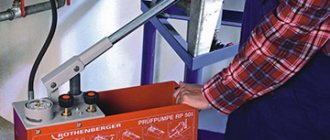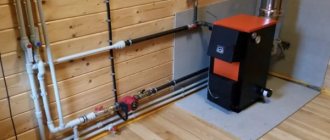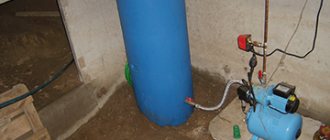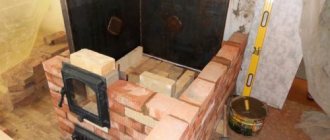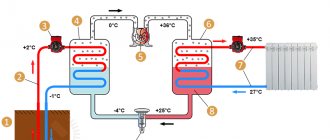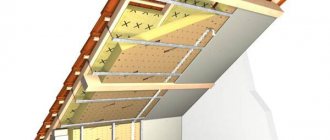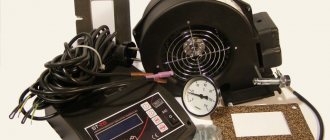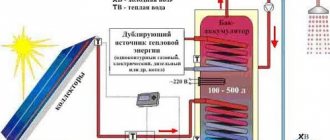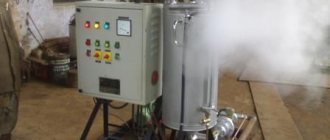The most common reason for choosing a solid fuel boiler is the absence of a gas main near the house, less often - the low cost or availability of solid fuel, for example, in coal-mining regions. Also, solid fuel boilers are still in demand due to their low cost, reliability and energy independence.
Modern solid fuel models have come quite far from their old-style counterparts; it is quite possible to use them as the basis of a heating system in a permanent home. In addition to standard non-volatile configurations, there are automated, much more efficient models that require connection to an electrical network; as well as boilers with a burning duration of several days and combined designs designed for the installation of a gas burner or heating elements.
In this material, we tried to reveal in as much detail as possible all the criteria and subtleties of choosing a solid fuel boiler, and gave examples of the most successful, efficient and best in terms of price-quality ratio for 2020, household solid fuel hot water boilers.
Heating system with solid fuel boiler
Heat generators of this type operate on:
- firewood;
- peat;
- briquettes;
- coal
Loading and ignition of fuel is done manually.
System Features
The complexity of the piping is due to the specifics of the operation of a solid fuel boiler:
- Thermal inertia. Unlike gas and liquid fuel, the device cannot be quickly extinguished. Even with the air damper closed, the wood continues to burn for some time, releasing a large amount of heat. This increases the likelihood of overheating of the working environment and, as a result, its boiling and a sharp increase in pressure in the system. The piping is supplemented with a cooling coil, an emergency circuit and other elements for emergency heat release.
- Dependence of efficiency on performance. Maximum efficiency is observed only in rated power mode. If the boiler is extinguished by closing the air damper, fuel combustion becomes incomplete. This leads to a drop in efficiency and an increase in the amount of soot in the exhaust. A heat accumulator is integrated into the system, accumulating the energy produced by the boiler and releasing it in portions to the heating circuit.
- High concentration of sulfur and other elements in flue gases due to the composition of solid fuel. When steam condenses in the exhaust, water reacts with impurities and turns into an aggressive acid cocktail. For this reason, it is necessary to prevent the entry of a working medium with a temperature below +50...+55°C into the heat exchanger, otherwise its walls will soon be destroyed. A mixing unit is used, which, if necessary, adds hot water from the “supply” to the “return”.
The complexity of the piping is due to the dependence of efficiency on productivity.
Requirements for the boiler installation location
A solid fuel heat generator must not be placed in living rooms, bathrooms or kitchens.
A separate technical room is allocated for it, meeting the following requirements:
- presence of 1 entrance with a width of 80 cm;
- volume – from 15 m³ + 0.2 m³ for each kW of productivity, but not less than 7 m³;
- ceiling height – from 2.5 m;
- supply and exhaust ventilation must provide 3-fold air exchange and the supply of oxygen necessary for fuel combustion;
- fire resistance limit of walls, partitions and ceilings is 0.75 hours.
Fire extinguishing equipment is kept in the boiler room. It is not allowed to have a room or attic above it.
Ventilation holes are located:
- supply - no higher than 50 cm from the floor;
- exhaust - not lower than 40 cm from the ceiling.
Advantages of a heating system
Heating with solid fuel has the following advantages:
- Independence from external energy sources. Some models are 100% autonomous, as they do not require electricity.
- Low cost of fuel: 1 kWh from burning wood costs 0.9 rubles, coal - 1.6 rubles, while from liquefied gas and diesel oil - 2.5 and 2.8 rubles. respectively. In a number of regions, brushwood and dead wood can be obtained for free.
- Functionality. Many heaters are equipped with a hob.
- Safety. Solid fuels do not explode like gases.
- Comfort. Unlike diesel boilers, wood and coal boilers do not emit an unpleasant odor.
Heating with solid fuel ensures safety and comfort.
In the absence of a centralized gas supply, such installations are most popular.
Flaws
The negative aspects of the system include:
- Low degree of automation. It is difficult to regulate the temperature of the coolant; fuel needs to be added every 4-5 hours.
- Dirty exhaust. It is necessary to regularly clean the chimney and heat exchanger of soot.
- Complex harness. The presence of a heat accumulator, an emergency circuit and other elements leads to an increase in the cost of the system and an increase in the volume of installation work.
- Fire hazard. Due to the risk of soot igniting, sparks hitting building structures and fire escaping during backdraft, precautions must be taken.
Some disadvantages appear to a lesser extent in long-burning boilers.
They are capable of functioning on 1 tab for 12 hours or more; pyrolysis models produce relatively clean exhaust.
Prices: summary table
| Model | power, kWt | Efficiency, % | Peculiarities | price, rub. | Rating (our rating from 0 to 5 points) |
| Teplodar Cooper Praktik 14 | 14 | 80 | Non-volatile, with heating elements, steel | 14 600 | 4.5 |
| ZOTA Yenisei 18 | 18 | 70 | Non-volatile, with the ability to install heating elements, steel, log length up to 55 cm | 19 500 | 4.0 |
| Bosch "Solid" 2000 B SFU 12 | 13,5 | 84 | Non-volatile, efficient and German quality, steel | 45 000 | 4.7 |
| Protherm “Beaver” 20 DLO | 19 | 90,2 | Non-volatile, cast iron, problem-free, log length only 30-32 cm | 70 000 | 4.7 |
| Kentatsu ELEGANT-03 17 | 17 | 80 | Non-volatile, cast iron, budget | 29 000 | 4.0 |
| STROPUVA S20 | 20 | 85 | Non-volatile, long burning up to 7 days, mine, | 85 000 | 4.8 |
| WEEK KO-60 | 60 | Up to 92 | Non-volatile, long burning up to 7 days | 121 000 | 4.2 |
| Buderus Logano S171-22W | 20 | 87 | Energy-dependent, pyrolysis, only wood, modern automatic systems | 179 000 | 4.8 |
BoilersSolid fuel boilers
Piping diagram without pump
In the absence of power supply or unstable operation of the network, a heating circuit with natural coolant circulation is constructed. Another name is gravitational. It does not require a pump, which means it is energy independent.
Principle of operation
The movement of the coolant through the pipes is ensured by convection - the tendency of a less dense heated medium to move upward under the influence of Archimedean force. Hot water is displaced from the boiler tank into the supply by colder water coming from the “return”.
Piping diagram for a solid fuel boiler without a pump.
Necessary tools and consumables
For installation you will need:
- perforator;
- levels – rack and spirit level;
- roulette;
- adjustable wrench "parrot";
- screwdrivers, pliers;
- for a polypropylene circuit - a special heater for welding plastic parts.
Materials needed:
- brackets for fastening pipes and radiators;
- dowels;
- tow or plumbing linen (FUM tape is not suitable due to the high temperature of the transported medium).
After heating, the volume of coolant will increase. To compensate, an expansion tank is inserted into the system.
Due to the absence of excess pressure in the gravity circuit, a cheap open type option is used.
Radiators, pipes, couplings and other fittings are also needed.
How to do
To create convection and minimize the hydraulic resistance of the circuit, it is built according to the following rules:
- The boiler is located at least 0.5 m below the radiators. In different rooms, marks at the same height are made using a spirit level.
- The first section from the supply pipe of the device is made vertical to the ceiling. This is an accelerating collector; it creates a strong convection pressure. The lowering is made along the corner of the room where the first radiator is located.
- Large pipes are used - with an internal diameter of 30-40 mm. As this parameter increases, the hydraulic resistance decreases.
- Horizontal sections are mounted with a large slope - 1 cm/m. This will make it easier for the cold liquid to drain back to the boiler.
The boiler is positioned to reduce hydraulic resistance.
The circuit must have a minimum of turns, fittings and other elements that increase hydraulic resistance.
The expansion tank is placed at its highest point. In order not to disturb aesthetics, the tank is often installed in the attic. In this case, the product must be insulated.
Minuses
The gravity system has a number of disadvantages:
- The length of the contour cannot exceed 30 m.
- Heat is distributed unevenly, radiators farthest from the boiler are colder than those closest to them.
- Due to the significant temperature difference between the “supply” and “return”, the heater experiences high loads.
- Large diameter pipes are needed, which increases the cost of the project and increases the volume of water.
- Through an open expansion tank, oxygen enters the working environment, causing corrosion of metal surfaces and airing of the circuit.
- It is impossible to operate the device in low-performance mode, which is required in the off-season.
Calculation of the volume of a membrane expansion tank
A closed heating system, in which the coolant is under pressure above atmospheric pressure, has more advantages. In this case, to compensate for the thermal expansion of water, instead of an open expansion tank, a closed membrane expansion vessel is used (shown in the diagram as a dotted line to the left of the boiler).
The expansion tank is divided into two parts by an elastic movable membrane. One part of the tank receives coolant from the heating system. On the other side of the membrane in the tank there is compressed air. Air pressure balances the pressure of the coolant in the heating system. As the temperature and volume of the coolant increase, the membrane in the expansion tank moves, increasing the volume occupied by the liquid. The air on the other side of the membrane is compressed even more.
The expansion membrane tank can be horizontal or vertical. There are also those in which the membrane can be replaced, but this is not possible.
How to choose the right expansion tank volume
The volume of the membrane expansion tank is calculated using the formula: V = (VLxE) / D;
VL – total volume of liquid in the heating system;
E – liquid expansion coefficient, for water at a temperature of 85°C = 0.034;
D – efficiency of the membrane tank, calculated by the formula: D= (PV-PS)/(PV+1).
Where PV is the maximum operating pressure of the system, usually 2 bar is sufficient, PS is the charging pressure of the membrane tank, equal to 0.5 bar.
Thus, D=(2-0.5)/(2+1)=0.5
If, for example, the volume of coolant - water in the heating system of a house is about 450 liters, then the volume of the expansion tank will be equal to:
V = (450x0.034)/0.5 = 30.6 l.
Selecting the correct boiler size, i.e. its heating power is a very important condition for economical operation and proper functioning of the boiler. The boiler must be selected so that its rated heating power corresponds to the heat losses of the heated object. Choosing a boiler with a rated power that is too high can lead to increased formation of deposits (soot, tar). Therefore, you should not use a boiler that has a significantly higher power than the heat loss of the facility.
The approximate heating capacity of the boiler can be calculated as follows - for every 10 m2
heated area of the house with average insulation of the building and ceiling height up to 3
m
. 1 kW of power required.
It is useful to familiarize yourself with the operating instructions for the solid fuel boiler. The operating instructions for solid fuel boilers “Atmos” (Czech Republic) can be read and downloaded by following this link. To download, in the window that opens, in the menu at the top left, select “file” -> “download”.
Heat accumulator with insulation
Heating equipment that runs on solid fuel is today an excellent alternative to gas. Well-thought-out and professionally designed piping significantly increases the service life of the unit. Among the different connection options, connecting a heat accumulator for a solid fuel boiler has become very common. This scheme allows for significant savings and relieves stress from the heating device during peak loads.
Heating circuit with pump
The forced circulation circuit does not have the disadvantages of the gravitational system. The length of the pipes and their diameter can be any, you just need to install a powerful pump.
Tools and materials
Additionally you will need:
- phase indicator;
- wire cutters;
- stripper (device for removing the sheath from the conductors) or knife.
As for the tools, you will need a phase indicator.
The following materials and products are needed:
- copper wires with a cross-section corresponding to the current consumed by the pump;
- WAGO type terminals or self-insulating clamps;
- dielectric adhesive tape;
- cable box.
In addition to pipes, fittings and radiators, to install the circuit you will need:
- Diaphragm expansion tank. Due to the excess pressure created by the pump, the system is made closed, so the option for gravity heating is not suitable. You need a red membrane tank for process water. Blue for drinking is more expensive.
- Pressure gauge, air vent and safety valve. Together they are called a security group.
- Three-way valve with thermal head.
- Filter.
What to do with condensate
To avoid coolant with a temperature below +50...+55°C entering the boiler tank, causing the formation of acid on its walls, a mixing unit is installed near the heater.
The “supply” and “return” are connected by a jumper to a 3-way valve controlled by signals from a temperature sensor. When the coolant at the inlet to the unit cools below the critical temperature, the valve will change position, and a mixture of hot flow and cold flow will occur.
In this mode, the boiler is also started after a long period of inactivity. Until the coolant warms up, it circulates in a small circle through the jumper.
Instructions
The heating system is assembled according to the following rules:
- DN25 pipes are used; for long circuit lengths, DN32 pipes are used.
- Horizontal sections are laid with a slight slope, necessary only for drainage of the pipeline - 2-3 mm/m.
- They don't make an accelerating manifold.
- The safety group is installed on the side of the boiler supply pipe no further than 0.5 m from it. It is prohibited to place shut-off valves between the heat generator and the devices.
- A pump with a filter and a membrane expansion tank are connected to the “return” so that they operate in gentle conditions at a relatively low temperature.
- The pump is placed between the 3-way valve and the heater.
Heating diagram with a solid fuel boiler with a pump.
It is necessary to provide for the possibility of emergency discharge of excess heat.
For this use:
- a branch with radiators in unheated rooms (for example, in a pantry or on a veranda);
- a coil in the boiler tank, connected to the water supply on one side and the sewer on the other.
An automatically controlled valve is installed on the cooling element, which opens according to a signal from a temperature sensor.
Step-by-step installation progress
Any instructions supplied with the boiler contain recommendations for installing the equipment. Installation of a solid fuel boiler must be carried out strictly according to the manufacturer’s instructions and technical rules.
The sequence of actions must be followed.
Base
First, you should build a solid base of non-combustible material under the bottom 20 cm wider than the base of the unit; it is best to pour a concrete base. After this, you need to install the boiler on a solid base, taking into account all distances, and adjust the horizontal and vertical positions of the device.
Connecting pipes and safety elements
Adhering to the connection diagram, insert a complete safety group for this type of boiler, which is installed up to the shut-off valves.
After this, the heating pipes should be connected, it is advisable to make the connection through shut-off valves, and carefully seal the joints with flax or plumbing tape.
Chimney
Next, you need to assemble a chimney, good draft in which depends on the correctly selected cross-sectional area and height of the pipe; all connections must be coated with heat-resistant sealant.
Final stage
At the next stage, you can fill the heating system with water at higher pressure and check for leaks. After which it is necessary to check the location of the grates, dampers, plugs, and fireclay stones. At the end of the installation, you need to reduce the water pressure to working pressure, install dampers in the chimney and firebox, and load firewood.
Now you can light the boiler, when the design temperature is reached, turn on the thermostat to the selected heat supply level for comfortable heating of the room and do not forget to add firewood to the firebox in a timely manner.
Heating scheme with two boilers
Often, with a solid fuel installation, they use a low-power device that runs on a different type of fuel - an electric boiler or a gas boiler, powered from a cylinder.
This gives the following advantages:
- If the user forgets to add firewood, the second unit will start automatically and prevent the system from cooling down.
- The main heater operates at maximum efficiency.
The main equipment is selected not according to the lowest, but according to the average winter temperature. This makes it possible to operate it most of the time at nominal performance, and therefore with maximum efficiency.
Heating scheme with two solid fuel boilers.
The second boiler is used:
- in extreme cold;
- during downtime of the main heater due to lack of fuel or during maintenance;
- in the off-season (alone).
Different connection schemes are used:
- parallel;
- consistent;
- cascading
Advantages of thermal accumulators
The mechanism of operation of the thermal accumulator
The heat accumulator can fully replace the hot water boiler. Moreover, both devices are comparable in cost.
However, the heat accumulator will not only provide hot water supply, but will also solve a whole range of additional problems. By using a solid fuel boiler with a heat accumulator, you can get many advantages:
- the service life of heating equipment increases several times;
- the boiler will never operate at maximum loads or idle;
- the temperature of the heating supply to the house is equalized. If the water in the boiler does not have time to heat up, hot coolant is automatically supplied from the reserve tank. Conversely, excess temperature of the carrier will be selected and accumulated;
- a correctly selected container continues to take heat from the boiler even with complete combustion of the fuel;
- resource savings reach 30%.
The advantages of batteries have been appreciated by many manufacturers of solid fuel boilers. And now they provide their equipment guarantees only if additional tanks are installed.
Tying of primary and secondary rings
This scheme is used in complex systems with a large number of consumers operating in different temperature conditions.
Installation procedure:
- A short circuit with the main heat removal devices (for example, lower floor radiators and an indirect heating boiler) is connected to the boiler. This is the primary ring.
- Loops are connected to the circuit - “warm floors”, floor branches with radiators, etc. These are secondary rings.
Each part is equipped with its own circulation pump. In the primary ring, the pump operates constantly, and the coolant moves continuously here. If necessary, blowers are started in the secondary loops, causing the circulation of the medium here too. Consumers powered from them receive heat.
If the pump in the secondary ring is turned off, the movement of water in it will stop, since the pressure at the points of connection to the primary circuit is the same. To do this, they are spaced at a distance of no more than 4 pipeline diameters.
Scheme of binding of primary and secondary rings.
The temperature in the secondary ring is controlled in 2 ways:
- starting and stopping the pump;
- changing the speed of its rotation.
Application of heat accumulators
There are several methods for calculating tank volume. Practical experience shows that on average, for every kilowatt of heating equipment power, an additional 25 liters of water are needed. The efficiency of solid fuel boilers, which includes a heating system with a heat accumulator, increases to 84%. By leveling combustion peaks, up to 30% of energy resources are saved.
When using tanks to supply domestic hot water, there are no interruptions during peak hours. At night, when needs are reduced to zero, the coolant in the tank accumulates heat and in the morning again provides all needs in full.
Reliable thermal insulation of the device with polyurethane foam (polyurethane foam) allows you to maintain the temperature. Additionally, it is possible to install heating elements, which helps to quickly “catch up” with the desired temperature in case of emergency.
Heat accumulator in section
Heat storage is recommended in the following cases:
- great need for hot water supply. In a cottage where more than 5 people live and two bathrooms are installed, this is a real way to improve living conditions;
- when using solid fuel boilers. Batteries smooth out the operation of heating equipment during peak hours, remove excess heat, preventing boiling, and also increase the time between refills of solid fuel;
- when using electrical energy at separate tariffs for daytime and nighttime;
- in cases where solar or wind batteries are installed for storing electrical energy;
- when used in the heat supply system of circulation pumps.
This system is perfect for rooms heated with radiators or underfloor heating. Its advantages are that it is able to accumulate energy received from various sources. A combined energy supply system allows you to choose the most optimal option for obtaining heat for a given period of time.
Scheme of a closed circuit with gravitational circulation
Often a combined system is built for a solid fuel boiler. It has a pump, a closed expansion tank with a membrane and a safety group, but is created according to the rules for circuits with natural circulation - with large pipes and slopes, an accelerating manifold, etc. This is done in case of a power outage.
To switch to natural circulation, you need to exclude the pump from the circuit. To do this, make a bypass with manual ball valves.
Closed loop wiring diagram.
No. 7. Fuel type
You can throw firewood, coal, pellets and sawdust . It is a mistake to believe that the boiler power will remain the same, no matter what fuel is used. Many boiler models can operate with different types of fuel, but maximum power will only be achieved when using the fuel that the manufacturer has indicated as the main one . When using less calorific fuel, the power will drop by 25-30% , and if it is too wet, the power drop can be up to 40%.
Average heat transfer parameters of different types of fuel:
- firewood – 2500 kcal/kg . Logs of wood are usually 25-30 cm long and can be sawn or split. It is important that the firewood is dry;
- anthracite coal - 7400 kcal/kg;
- hard coal – 7000 kcal/kg;
- brown coal – 3500 kcal/kg;
- pellets – 4500 kcal/kg.
Selecting the optimal system
When developing a project, the following factors are taken into account:
- availability and stability of power supply;
- presence of consumers with non-permanent operating hours.
In suburban areas, where the energy infrastructure is stable and can be quickly repaired in the event of an accident, a system with forced circulation of coolant is preferable. In remote areas, long outages are possible; here it is better to assemble a combined circuit.
And only in field conditions, when there is no centralized power supply, a natural circulation scheme is used.
If there are temporarily working consumers, for example, a “warm floor” in a swimming pool, the following schemes are used:
- On large objects - with primary and secondary rings.
- On small ones - radial.
In the second case, separate branches from the common collector are laid to the heat removal devices, installing control valves on them. All “returns” from them also converge at 1 point.
Power
This is an important point to consider. The calculation is made according to the formula for 10 sq.m. 1kW. But these are just approximate numbers. Two categories can be distinguished: up to 100 kW (intended for individual use), and more (used in large factories).
There must always be a reserve of power so as not to create excessive load. Thanks to this, they will work more productively and longer. Don't forget that this also depends on what is being burned in there.
Optional equipment
To increase efficiency, a heat accumulator is installed between the boiler and the heating circuit - a water-filled container in a mineral wool shell. The solid fuel is constantly operated in nominal performance mode with maximum efficiency, heating the contents of the tank to +95°C.
A heat accumulator is installed to increase efficiency.
Hot water is withdrawn from the battery automatically as the medium in the circuit cools.
In a country house and other small buildings, a hydraulic arrow is used to connect the “warm floor”. This is a collector installed vertically. Thanks to this orientation, the temperature varies with height; the environment below is colder. Radiators are connected to the upper part, and “warm floors” are connected to the opposite part.
Heat exchanger material
The most common:
- Steel. It has less inertia and weight, more variety of shapes, it tolerates mechanical damage better, but is susceptible to corrosion and burnout.
- Cast iron. Durable and resistant to strong heat, easier to repair, smaller in size, but low resistance to sudden temperature changes and thermal shock, less productive, much heavier.
Other options are less common.
Rules for arranging a boiler room
It is recommended to cover the floor with ceramic tiles and lay out the walls with refractory bricks. This measure will reduce the likelihood of a fire.
The floor with a wooden or other combustible covering within a radius of 1.2 m from the center of the boiler combustion door is protected by a 1.2 mm thick steel flooring on a thermal insulating substrate made of asbestos or basalt cardboard.
The walls are covered with fire-resistant plaster, for example, based on vermiculite. Layer thickness – 25 mm.
The following distances are maintained between the heater and the walls:
- from the combustion door side – 2 m;
- on the sides and back - 0.8 m.
The boiler room is equipped with emergency and emergency lighting. In case of depressurization of the circuit, it will be equipped with a ladder or pit 0.5 m deep connected to the sewer.
It is advisable to lay the walls of the boiler room out of brick.
With a heat generator power of up to 30 kW, firewood and coal can be stored near the boiler room in boxes made of fireproof material. The minimum distance to the firebox is 1 m.
If the boiler’s productivity is higher, an isolated, dry and ventilated room is allocated for the warehouse.
No. 10. Manufacturers
We will not discover America if we say that quality largely depends on the reputation of the manufacturer . Large companies will not spoil their name with products of poor quality, so when choosing a solid fuel cat, it is better to pay attention to models from trusted manufacturers. This is the case when it is better not to save.
You can note the following brands of boilers:
- Buderus is a German company that specializes in the production of boilers of various types and purposes. Solid fuel models operate on different types of fuel, there are classic and pyrolysis boilers, the power is sufficient for heating large private houses;
- Bosch produces traditional energy-independent boilers;
- Ferroli is a large Italian company that produces household and private boilers. Solid fuel boilers include coal, wood and pellet boilers. The assortment is wide, the quality is high;
- SIME is another Italian company that has made a name in just 35 years. Products are exported to 50 countries around the world, the range is represented by coal and wood boilers;
- VIADRUS – Czech boilers. They are presented in a fairly wide range, are reliable, safe, and have an attractive price;
- Stropuva is a Lithuanian manufacturer that often introduces new solutions in the field. The latest development is a 40 kW boiler with the ability to operate on one load for 30 hours;
- Protherm – high-quality Slovak cast iron boilers with high efficiency.
You can also note the products of domestic enterprises produced under the brands “Prometheus” (for houses up to 450 m2), “Ochag” (there are double-circuit boilers), “Zota” and “Dymok”.
Arrangement of a pellet bunker
There is a type of solid fuel boiler that does not require frequent loading of fuel. They operate on pellets - granules made from pressed waste.
You can make a bunker for storing them yourself from the following materials:
- tin;
- plywood;
- fabrics on a metal frame.
An electrically driven screw feeder is connected to the tank to automatically feed pellets into the burner. It is better to purchase a 2-screw model with an air gap, which eliminates the movement of fire into the bunker during reverse thrust.
No. 9. What else to consider?
Obviously, even before purchasing a boiler, it is worth deciding whether the boiler will be the main source of heat or a backup one . In the latter case, you will have to install an expansion tank or a heat accumulator - this is easier to do right away than to later upgrade an existing system.
If in the future there is an opportunity to switch to gaseous fuel , when choosing, you should pay attention to the possibility of transforming the boiler. Many traditional boilers can switch to gas by installing an inflatable burner. It’s convenient, but it’s worth considering that the efficiency of the converted boiler will be lower than that originally designed for gas.
Additional recommendations
To prevent the heat exchanger from becoming overgrown with scale, fill the system only with demineralized water. Often homeowners collect rainwater for these purposes.
For the same reason, it is better to purchase a model with a cooling coil in the heat exchanger, and not with water supplied directly to the tank.
Do not smoke in a house with an aluminum radiator system. Hydrogen is formed in them, which comes out through an air vent or Mayevsky valve.
During the period of inactivity of the heater, the heat exchange in its tank takes on the opposite direction. To ensure that the water in the circuit cools more slowly, it is recommended to create a bypass with taps through which the medium will move around the device.
By the way, it’s not difficult to make a solid fuel boiler with your own hands.
Operating rules
For efficient heating operation, it is important to choose the right fuel, taking into account its density, humidity, fraction, and adhere to recommendations for storing materials. It is necessary to regularly maintain the equipment, monitor its operation, and comply with the requirements for the coolant (its hardness coefficient, chemical composition).
Preventing overheating
Exceeding the permissible heating temperature of the coolant and the boiler unit for a long time reduces the operating life of the boiler installation and increases the likelihood of an emergency. Parameter control is needed to create comfortable conditions in the house and optimize fuel consumption. Overheating is prevented by installing safety valves, using an additional built-in heat exchanger or an emergency circuit.
Exceeding the heating temperature reduces the operating life of the boiler installation.
Exhaust gas outlet
Compliance with smoke removal rules is the main requirement for safe operation of the boiler. To do this, choose a round pipe with a smooth inner surface made of stainless steel or asbestos.
Its diameter and height are determined by the power of the unit; thermal insulation (needed only outdoors) is performed using heat-resistant insulation.
How to make remote control of the heating of a country house with your own hands
The best option would be a GSM socket; I consider this modern device to be the easiest to install to control the heating system yourself. The unit has a built-in temperature sensor, and a maximum load of 4 kW is enough for small country houses.
All radiators must be connected in series, then the device is inserted into a regular socket, the smart heating temperature sensor is able to independently turn off the created system after heating the room to a given temperature, and the owner can do this from any gadget.
